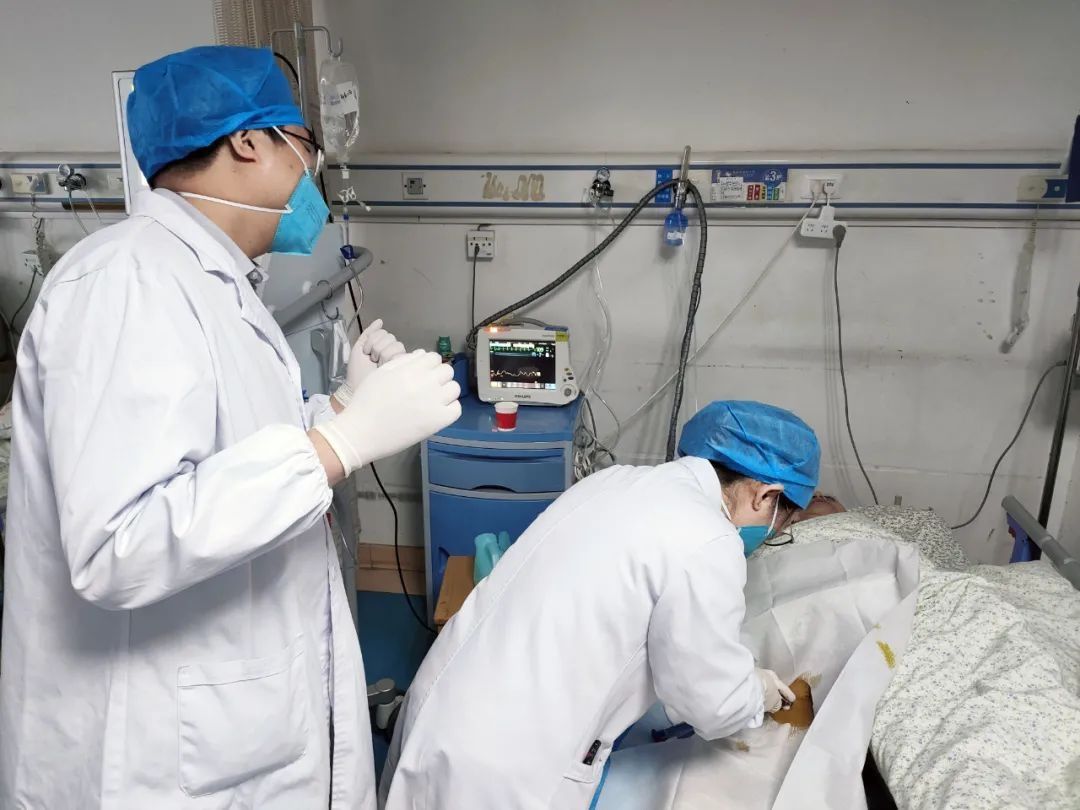Mr. Zhang’s temper is a bit “stubborn”. Recently, he almost lost his life because of his stubborn temper. Fortunately, after the timely rescue by the ICU medical staff of Hunan Provincial Chest Hospital, Mr. Zhang was saved.
Mr. Zhang, 59, has a 10-year history of gout and many years of tuberculosis medical history. Despite being sickly, Mr. Zhang has never received systematic treatment according to the doctor’s request. Every time, he always relies on his “stubborn” temper. After taking it for less than a month, the drug will stop on its own. However, in recent months, Mr. Zhang had symptoms of coughing and expectoration again. Thinking it was a cold, he bought some cold medicines and anti-inflammatory drugs to take them. Came to Hunan Provincial Chest Hospital for medical treatment.
When he was admitted to the hospital, the doctor conducted a systematic examination on Mr. Zhang and found that he not only had the original drug-resistant tuberculosis aggravated, but also had severe uricemia, severe anemia, Renal insufficiency, severe acidosis, etc. After learning about his condition, Mr. Zhang was still “stubborn”, did not follow the doctor’s orders for treatment, and was forcibly discharged from the hospital. As a result, on the night of returning home, he became delirious and unable to communicate with others normally. Until the next morning, he was unconscious and was sent back to the ICU of Hunan Provincial Chest Hospital by his relatives in a 120 ambulance for rescue.

The patient is being treated in Hunan Provincial Chest Hospital
Hunan Long Feihua, chief physician of the Department of Intensive Care of the Provincial Chest Hospital, carefully inspected the patient and, combined with relevant examinations, found that the patient had severe renal damage and fatal acidosis. After the emergency treatment, Long Feihua immediately organized the blood purification treatment team of the department to carry out blood purification treatment for Mr. Zhang. Correct acid-base disorders by removing blood urea nitrogen, creatinine, and uric acid. At present, Mr. Zhang has gradually regained consciousness and his vital signs are stable.
“This is one of the most severe gout patients I have ever seen in my medical career. My hands and feet are covered with tophi, the skin is broken, and the joints are completely deformed. And it has already caused serious renal damage.” On March 2, Long Feihua bluntly stated that he had not received systematic treatment for gout for ten years, which not only caused joint deformation and restricted mobility, but even led to renal failure; drug-resistant tuberculosis The common cause is also caused by the irregular use of drugs, and it is very difficult to cure it now.
“Early diagnosis, early diagnosis, and early standardized treatment must not be delayed.” Long Feihua emphasized that gout patients must keep in mind that gout-related symptoms should go to a regular hospital for treatment in time, and the doctor will do according to the patient’s condition. Make corresponding dose adjustments, and regularly follow up to monitor adverse drug reactions. Do not use or stop the drug without authorization. At the same time, pay attention to a reasonable diet, eat less or try to avoid high-purine foods, quit drinking, quit smoking, drink more water, and control uric acid to prevent gout attacks. At the same time, patients who are overweight should lose weight, control their weight, and reduce bad habits such as staying up late, working overtime, and being overworked, so as to reduce the chance of gout recurrence.
Long Feihua introduced that tuberculosis is a chronic infectious disease transmitted through the respiratory tract, and drug-resistant tuberculosis is a resistance to one or more anti-tuberculosis drugs. The reasons for the occurrence of drug-resistant tuberculosis are: firstly, tuberculosis patients do not actively cooperate with the doctor’s treatment, and drug resistance is caused by irregular drug use; secondly, drug-resistant tuberculosis patients do not receive timely and effective treatment, infect others, and are transmitted by drug-resistant tuberculosis patients. Infected people may become patients with drug-resistant TB once they become ill.
“Once you have symptoms of cough and sputum for more than 2 weeks, or have hemoptysis, chest tightness, shortness of breath, weight loss, fatigue and other symptoms, you should go to a professional medical institution for diagnosis in time. “Long Feihua said that once a pulmonary tuberculosis patient is diagnosed, it is necessary to start a standardized full course of anti-tuberculosis treatment as soon as possible. If the treatment goes well, the patient can bring the medicine back home after hospitalization, and the doctor in the community service station or the village doctor’s office is responsible for infusion or supervising the taking of the medicine. In addition to taking the medicine on time as prescribed by the doctor, the patient should also conduct regular reexaminations as required, so that the doctor can understand the effect of the treatment through the reexamination results and adjust the treatment plan in time.

Knowledge Links:
What is blood purification treatment?
“Blood purification therapy refers to various continuous Or a general term for intermittent removal of excess water and solutes in the body. This technology is gradually developed on the basis of renal replacement therapy technology. Blood purification includes renal replacement therapy, hemoperfusion and plasma exchange, etc. “
Long Feihua introduced that it is well known to the public that when there is a serious problem with kidney function, the use of blood purification equipment to replace the kidney to complete its work, through the extracorporeal circulation of blood The purification method continuously or intermittently removes water and solutes;In the intensive care department, it is also possible to remove and adsorb toxins and other substances in the body by connecting perfusion devices, plasma separators, plasma adsorbers, etc. This treatment can be continued for 24 hours or more and is one of the “three major life support technologies” for critically ill patients.
Blood purification therapy is suitable for a variety of diseases, including various unstable cardiovascular functions, hypercatabolic or acute and chronic renal failure with cerebral edema, multiple organs Dysfunction syndrome, systemic inflammatory response syndrome, congestive heart failure, acute respiratory distress syndrome, crush syndrome, severe burn, acute necrotizing pancreatitis, hepatic encephalopathy, drug or poison poisoning, etc. It has the characteristics of stable hemodynamics, high solute clearance, and the ability to remove inflammatory mediators and toxins. Obviously, it can escort the functions of various organs of critically ill patients and gain valuable time for rescue.
END- –
Precise, sincere , Jen, and
author : Huo Xuqi Yang Zhengqiang
Photo: Huo Xuqi
Editor: Tang Xionglue
< span>Produced by: Hunan Provincial Chest Hospital